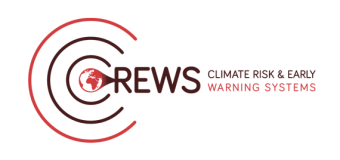Weather and Climate Early Warning System for Papua New Guinea
The Weather and Climate Early Warning System for Papua New Guinea project provides improved drought monitoring and early warning systems that can foster better decision making for the following sectors: agriculture, disaster management, energy and infrastructure. Other hazards related to droughts such as frost and bush fires would also be indirectly addressed.
The project creates end-to-end EWS focused on reducing drought impacts, while at the same time leveraging and providing a foundation for EWS focused on other hazards, and specifically flooding. The project address improved weather observations, climate data management of historical data for the monitoring of drought, climate data rescue, state-of-the-art seasonal forecasting coupled with monitoring and advisories for drought, and a more efficient distribution of alerts and information suitable for decision making at national and local level.
The focus is on building the capacity of the National Meteorological Service and strengthening its cooperation with key sectoral ministries, departments and other stakeholders working in the above areas to put in place complete systems that deliver warnings and relevant information to end-users. Enhancement of these basic capabilities is complemented with support for integration of early warnings into national processes. The project bring together technical expertise from cooperating institutions to ensure access to relevant data, products, tools, training, and equipment. The selected sectors addressed by the project provide showcases for development of additional services subsequently. Several additional on-going or planned projects which the current project complements are identified below.
Objectives
Structure
The project is structured around six main components:
Component 1: Assessment and User Requirements
Component 2: Improvement of Observations and Databases.
Component 3: Weather / Climate Monitoring and Forecasts
Component 4: Support to Early Warning System development
Component 5: Institutional strengthening.
Component 6: Support the process (Management, monitoring and evaluation)
It has three expected outcomes:
- EWS focused on reducing drought impacts, while at the same time leveraging and providing a foundation for EWS focused on other hazards, and specifically flooding
- Improved weather observations, climate data management of historical data for the monitoring of drought, climate data rescue, state-of-the-art seasonal forecasting coupled with monitoring and advisories for drought, and a more efficient distribution of alerts and information suitable for decision-making at a national and local level
- Building the capacity of the National Meteorological Service and strengthening its cooperation with key sectoral Ministries, departments and other stakeholders working in the above areas to put in place complete systems that deliver warnings and relevant information to end-users
- Region:
- Region V: South-West Pacific

- Disaster Risk Reduction



